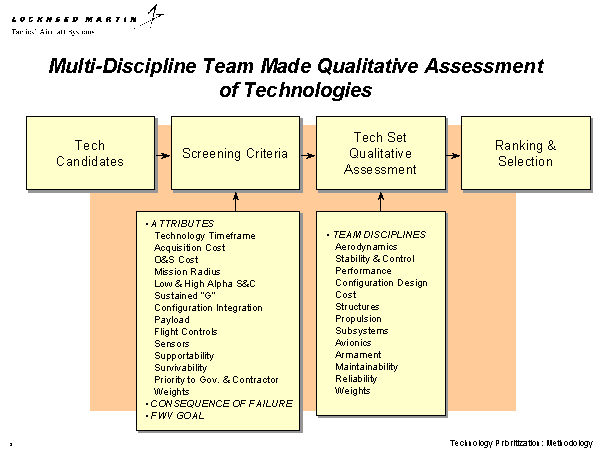Slide 8 of 58
Notes:
Lockheed Martin has conducted an extensive technology survey in which the teamís fighter/attack experience, UCAV, CRAD programs and IRAD activities were leveraged to identify flight demonstration technologies. The technologies were drawn from more than 200 candidates representing a broad range of research and in-house IRAD programs, including the FWV Program, the Affordable Fighter Study, Unmanned Combat Air Vehicles, Advanced Production Concepts, and Next-Generation Fighter IRADs.
Definitions of the attributes used in the technology matrix are
Technology Timeframe: Meets year 2000 availability.
Acquisition Cost: Includes airframe, engine avionics, ground support equipment and initial spares.
O&S Cost: Includes fuel/oil, crew personnel, maintenance (recurring and depot) and indirect costs.
Mission Radius: The distance the aircraft can travel and return home.
Low Alpha S&C: Adequate control power at high angles of attack at low speeds. No nonlinear effects.
Sustained g: A flight condition that the aircraft can sustain a constant g force.
Configuration Integration: Impact of integrating the technology into the airframe.
Payload: Capability of increasing usable volume for stores and equipment.
Flight Controls: Hardware and software impacts.
Sensors: Flexibility for integration of mission sensors.
Supportability: Rearming, refueling or maintenance repair, RM&S, and Safety.
Survivability: Robustness, protection against threats.
UCAV SEAD Enabler: Technology critical to successful flight of a UCAV flying a SEAD mission.
Priority to Government and Contractor: Government or contractor have a CRAD or IRAD pertaining to this technology.
Weights: Impact of the technology on the empty weight of the vehicle.















